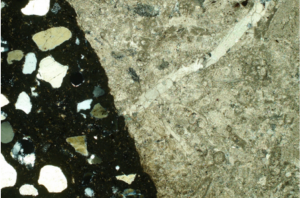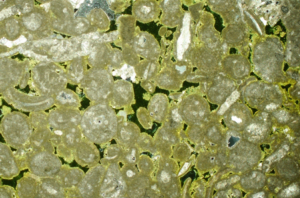Petrographic Examination of Materials
The examination of materials in thin section can provide a lot of valuable information about the performance of a material, either prior to use or in an investigation when a problem has been encountered.
Examination of materials pro-actively has many advantages as it will prevent subsequent failures in service.
In forensic investigations the detailed insight that a thin section examination can provide is often conclusive in confirming the true cause of a problem and what the possible solutions can be.
Benefits of examining a sample in thin section
Natural Stone
- Classification of stone to present its true geological type. Relevant to CE Marking.
- Identification of potentially deleterious mineral inclusions or features e.g. stylolites.
- Contributes to assessment of likely in-service durability.
- Supports investigations into performance issues.
Concrete
- Confirmation of aggregate type
- Distribution and size of aggregate.
- Identification of cement type and cement replacements ; e.g. OPC, HAC, GGBS, PFA.
- Confirmation of presence and depth of carbonation.
- Size and distribution of entrapped air.
- Identification of air entrainment.
- Indication of water/cement ratio.
- Evidence of deleterious reactions e.g. alkali silica reaction (ASR), sulfate attack, delayed ettringite formation (DEF)


